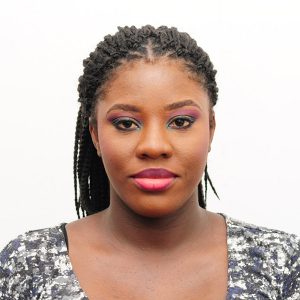— to correct the imbalance between consumption and production in the region, says President Ali
AS nations in the CARICOM region continue to be hard hit with food-security issues due to external global factors, President, Dr Irfaan Ali stressed that the time is now for CARICOM to correct the imbalance between consumption and production in the region.
And the way to achieve this is through the “25 by 25” target, that is, to reduce the region’s food-import bill by 25 per cent by 2025.
The President highlighted these and other issues on Thursday at the National Cultural Centre (NCC) as he delivered welcoming remarks at the opening of the Agri-Investment Forum and Expo, which will run from May 19-21 at the Arthur Chung Conference Centre.
“We, the leaders of CARICOM, must send a strong message, we must correct the imbalance. We have and we must prepare to achieve the target of 25 by 2025,” President Ali noted.
“We cannot lose this momentum as the region cannot continue the importation of billions of dollars in products that we can produce right here. The time is now, the will is there. Together, we have no other choice but to create a win for CARICOM under these challenging food security times.”
President Ali was one of eight CARICOM heads of government who spoke during Thursday’s opening ceremony, who all stressed their commitment to doing what is necessary to see the regional food- import bill reduced.
The forum, which will focus on connecting investors and financial institutions with agricultural projects, saw the participation of close to 600 registered delegates, more than 250 companies, and more than 20 donor agencies, including international and regional financial institutions.
A number of key investment-related activities, inclusive of a country-specific investment platform, will see investors presenting bankable projects for investment consideration in specific CARICOM member states.
During his address, President Ali acknowledged that in achieving the “25 by 25” target, there are many challenges and issues. Nonetheless, work is being done in partnership with the private sector, particularly in the areas of finance, logistics and transport, improving primary production, improving agro-processing and linking markets to produce.
“We recognise if we do not address these issues in a collective, multifaceted manner, then we would not be able to bring the long-term solution that we so critically require,” Dr Ali stressed.

WOMEN AND YOUTH
Special emphasis was also placed on the need for active inclusion of women and youth in agriculture.
“Here in Guyana, we have set ourselves a target in the shade house and livestock projects for at least 20 per cent of farms to be owned by women, and to have a very high participation of young people for the shade houses project,” Dr. Ali said.
The President also went into outlining some of the key areas and ways in which Guyana will be contributing to 25 by 25. Key areas highlighted include poultry production, corn and soya, vegetables and rice.
According to Dr Ali, the plan is to move Guyana’s current production of 50,000 metric tonnes of poultry to 90,000 metric tonnes by 2025.
Corn and soya production, which is currently at 4,300 metric tonnes, will be increased to 5,000 metric tonnes; vegetables will be increased from 324,000 metric tonnes to 400,000 metric tonnes and rice from 560,000 to 847,000 metric tonnes.
More than just talking the talk, President Ali noted the government is prepared to walk the walk by putting forth tangible investments in agriculture.
“We are matching the targets with incentives from government,” Dr Ali noted.
The government’s plan to reduce energy costs by 50 per cent by 2025 is also a big part of the plan for growth in agro-processing and other value-added manufacturing sectors, which are energy intensive.
The President also noted that Guyana is exploring ways to tap into the global industrial hemp market, which will reach US$12.01 billion by 2028.
Dr Ali also highlighted the need for increased production in the area of aquaculture, noting the decline in sustainable fishing, with less than 50 per cent of the marine stocks in the Caribbean expected to be fished sustainably by 2030 if this trend continues.
According to Dr Ali, with marine stock on a continual decline in the region, any increase from fisheries supply will have to come either from imports or aquaculture farms within the region.
“The choice is ours. The decision is very simple. If we are to secure our production we must take action to expand our aquaculture industry as extra-regional supplies will be more costly, given the sharp rise of import cost,” he noted.



.jpg)











